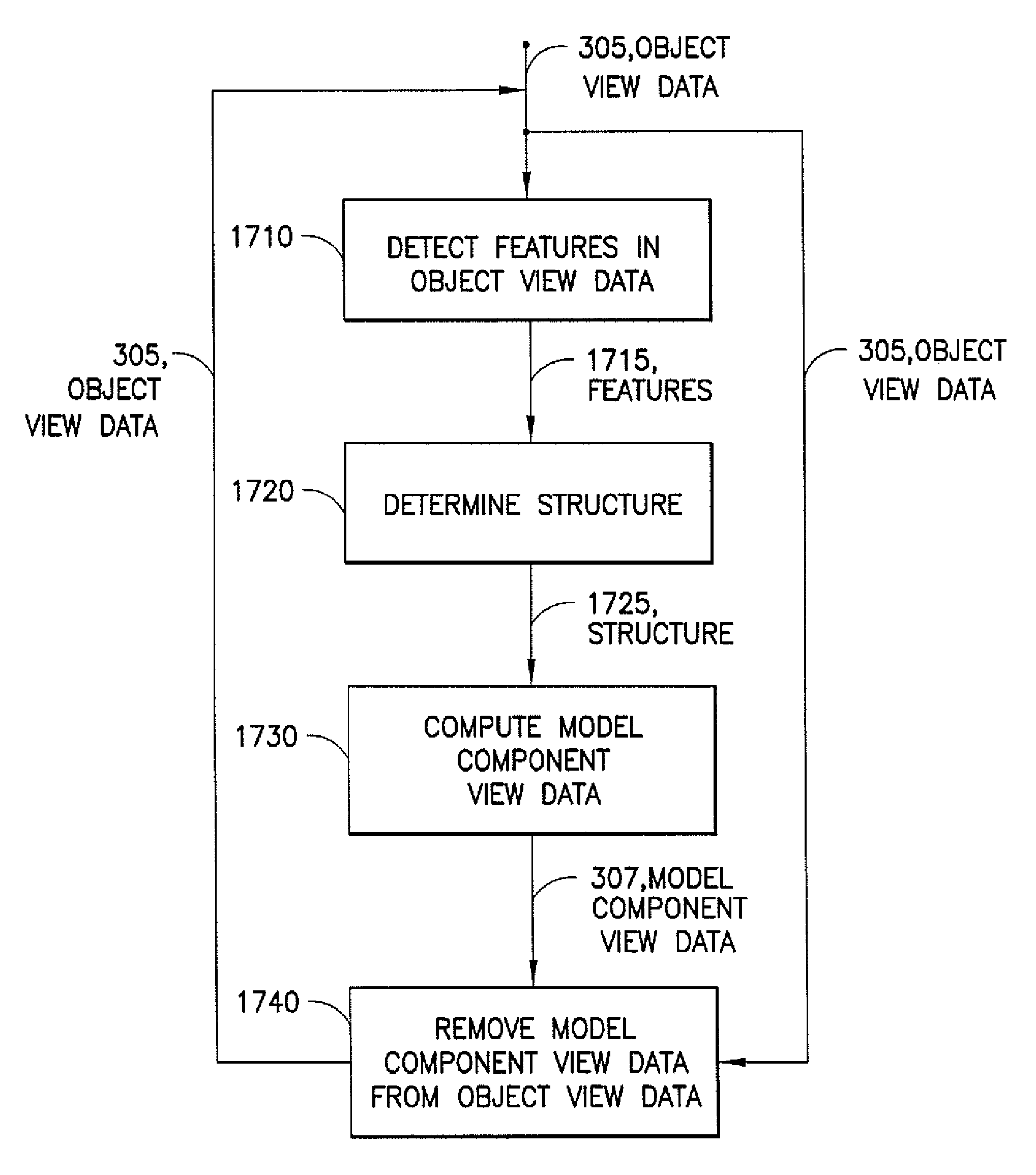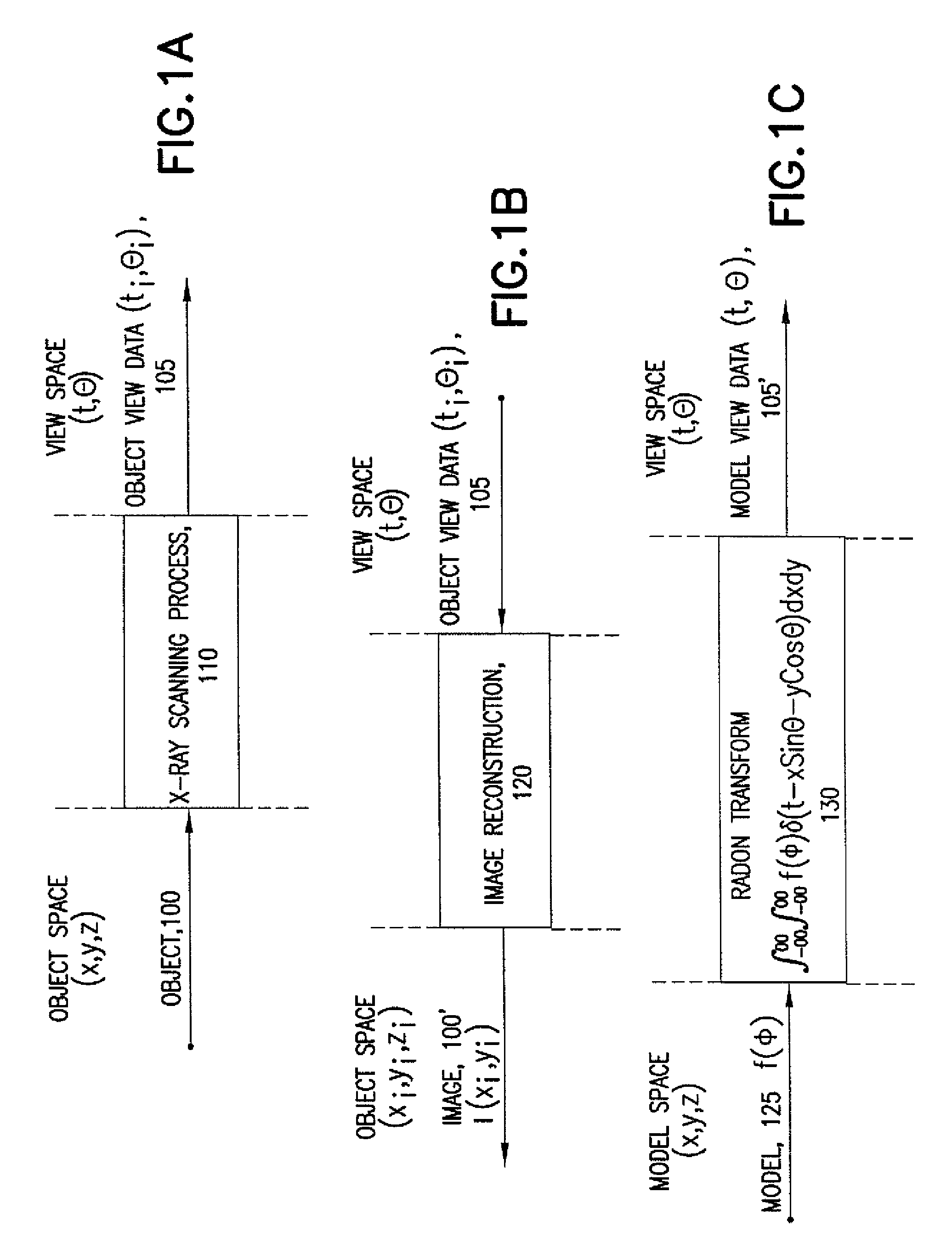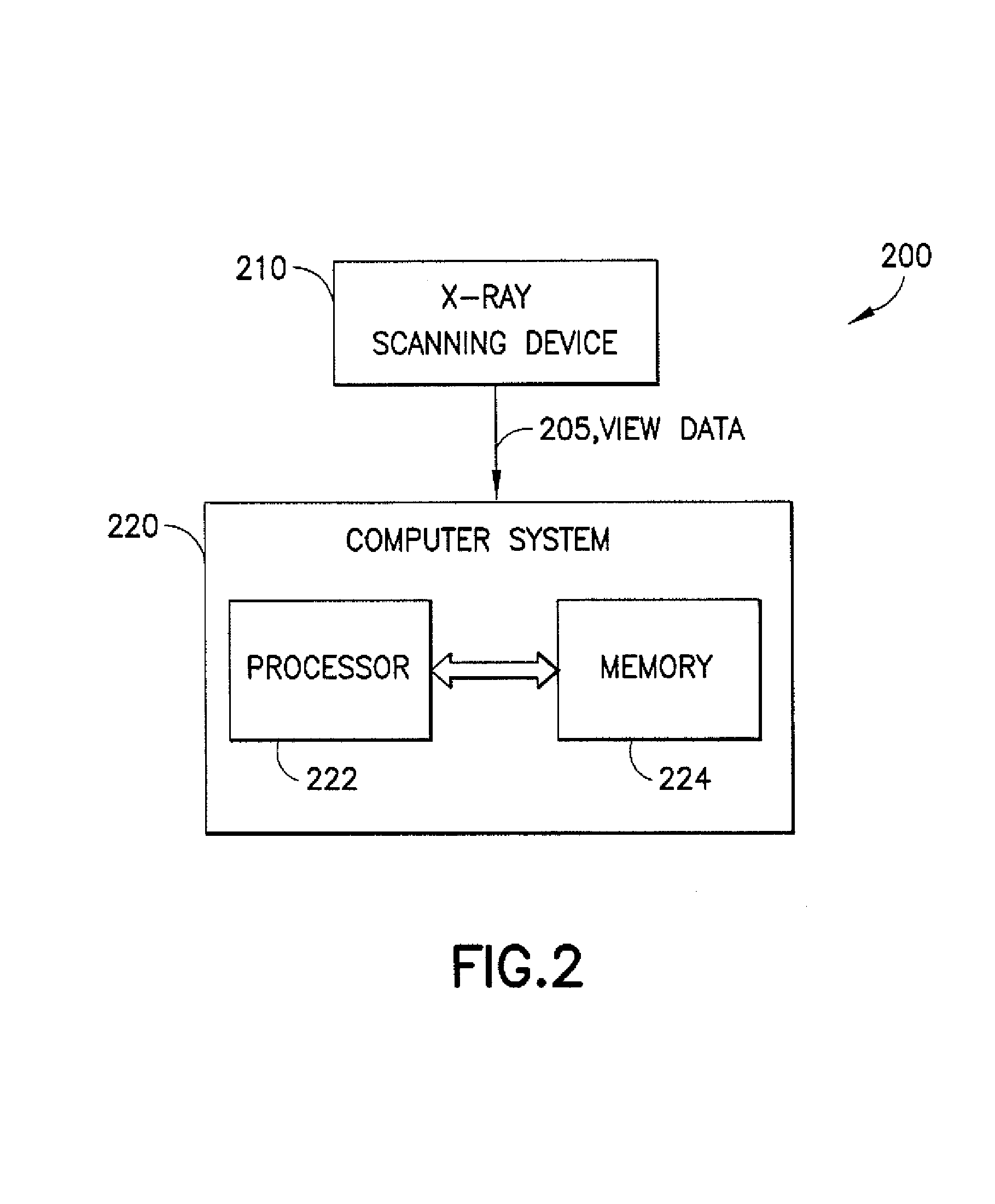Methods and apparatus for model-based detection of structure in view data
a technology of view data and model data, applied in the field of model-based techniques for detecting structure in view data, can solve the problems of affecting the resulting image resolution, reconstructed image data has less resolution than view data, and loss of resolution, etc., to obscure and/or eliminate the detail of the reconstructed imag
- Summary
- Abstract
- Description
- Claims
- Application Information
AI Technical Summary
Benefits of technology
Problems solved by technology
Method used
Image
Examples
Embodiment Construction
[0047]As discussed above, segmentation of reconstructed images is often difficult and is limited to information describing structure at the reduced resolution resulting from the image reconstruction process. Structure at or below this resolution, though present in the view data, may be unavailable to detection and segmentation algorithms that operate on reconstructed image data. Conventional model based techniques that seek to avoid image reconstruction have been frustrated by the combinatorial complexity of fitting a model configuration to the observed view data.
[0048]In one embodiment according to the present invention, a model is generated to describe structure to be detected in view data obtained from scanning the structure. The view data may be processed to detect one or more features in the view data characteristic of the modeled structure and employed to determine a value of one or more parameters of a configuration of the model, i.e., information in the view data may be used...
PUM
 Login to View More
Login to View More Abstract
Description
Claims
Application Information
 Login to View More
Login to View More - R&D
- Intellectual Property
- Life Sciences
- Materials
- Tech Scout
- Unparalleled Data Quality
- Higher Quality Content
- 60% Fewer Hallucinations
Browse by: Latest US Patents, China's latest patents, Technical Efficacy Thesaurus, Application Domain, Technology Topic, Popular Technical Reports.
© 2025 PatSnap. All rights reserved.Legal|Privacy policy|Modern Slavery Act Transparency Statement|Sitemap|About US| Contact US: help@patsnap.com



